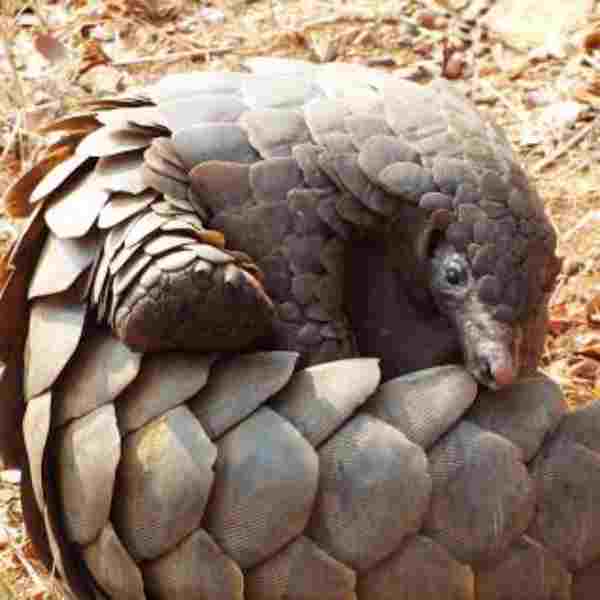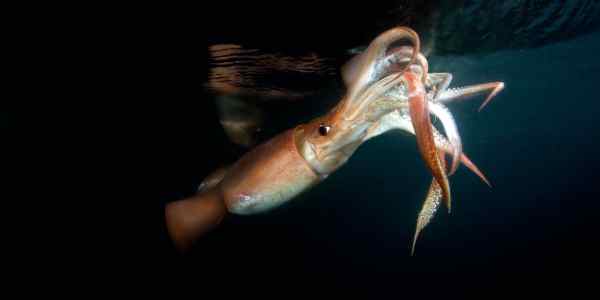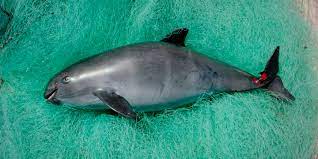Welcome to a world of incredible creatures – the rarest animals that inhabit our planet! In this blog, we’ll be delving into the realm of awe-inspiring animals that most people only dream of seeing in person. These magnificent creatures are fascinating and hold great value in our ecological system.
Unfortunately, they are all at risk of extinction due to factors like habitat destruction, climate change, and poaching. It’s crucial to raise awareness and take action to protect these animals and their habitats.
Table of Contents
Meanwhile, new species continue to be discovered every day, which gives us hope for the future of our planet. So dive into the world of the rarest animals to learn more about these incredible beings and how we can work together to protect them.
1. Pangolins

First up is the Pangolin! This fascinating creature has an entire blog dedicated to it called “Pangolins: The Complete Guide.” If you’re interested, check it out. Otherwise, here are the essential facts about Pangolins: they belong to the list of the rarest animals in the world.
Pangolins can be found in Asia and Africa, with a total of eight known species. However, locating them can be challenging due to their decreasing population, even though they inhabit various regions across the globe. Each species differs in coloration, size, and habitat. Yet, they all share common characteristics and require support for anti-poaching efforts.
The Asian Pangolins consist of four types:
- The Chinese Pangolin
- The Sunda Pangolin
- The Indian Pangolin
- The Philippine Pangolin
All Asian Pangolins are critically endangered according to the IUCN (International Union for Conservation of Nature).
On the other hand, the four African species include:
- The Ground Pangolin
- The Giant Pangolin
- The White-bellied Pangolin
- The Black-bellied Pangolin
These African creatures are sadly listed as vulnerable by the IUCN.
Pangolins are solitary animals, mostly nocturnal, and highly secretive, making them difficult subjects for scientific study. Their behavior and habits remain largely mysterious, as each species has unique characteristics and behaviors.
Some pangolin species, like the Chinese pangolin, rest underground in caves during the day, while others, such as the Black-bellied and Sunda pangolins, sleep in trees. At night, they venture out to hunt for insects.
Pangolins are well-equipped for digging, using their strong front legs and claws to create burrows. Their tails and rear legs provide support and balance during this process. They excavate passages by pushing up and from side to side with their tough-scaled bodies.
Front and hind feet help them kick back soil toward the burrow entrance, and they can burrow several meters to find their nightly feast of ants.
In temperate areas, Chinese pangolins spend the winter months in deep burrows, strategically located near termite nests to ensure a continuous food supply. In Chinese legend, pangolins are said to travel all around the world underground, earning them the Cantonese name “Chun-shua-cap,” which translates to “scaly hill-borer.”
Although pangolin species share many traits and behaviors, there are fundamental differences among them. For example, White-bellied pangolins are skilled tree climbers, while Ground pangolins prefer terrestrial habitats. Some, including all four Asian species, are opportunistic and can forage both in trees and on the ground.
Indian pangolins in Sri Lanka reportedly live in the rainforest canopy, where they find an abundance of fruit and flowers that attract ants. They prefer staying up high rather than at ground level, which is darker and has a limited food supply. Some pangolin species even possess semi-prehensile tails, allowing them to grasp and hang from branches, aiding in climbing and living off the ground.
Pangolins are well-protected by their scales, which cover their bodies. When threatened, they can quickly curl into a protective ball, shielding their vulnerable underbellies. Additionally, they deter predators by hissing, puffing, and swinging their sharp-edged tails.
Pangolins rely heavily on their sense of smell. They mark their territories with urine and secretions from a gland near their tail. These scents likely communicate dominance and sexual status and help individual pangolins recognize each other, as per scientists’ theories.
2. The Giant Squid

Today, we’re delving into the realm of one of the rarest creatures known as the Giant Squid. Its name fits perfectly, as the largest specimen ever recorded by scientists measured almost 43 feet (13 meters) in length and possibly weighed close to a ton.
You’d assume such an immense animal would be easily spotted, but due to their deep underwater habitat and the vastness of the ocean, Giant Squids remain elusive and are seldom seen. Much of our knowledge about them comes from the chance discovery of dead carcasses that have floated to the surface and been found by fishermen.
In 2012, after years of searching, a group of scientists from Japan’s National Science Museum, along with colleagues from Japanese public broadcaster NHK and the Discovery Channel, succeeded in filming a Giant Squid in its natural environment for the first time. Prior to this, the species had been observed alive only in 2006 when researchers used bait beneath a research vessel near the Ogasawara Islands, managing to bring a 24-foot (7-meter) squid to the surface, providing the world with its first glimpse of a living, breathing Giant Squid.
Though a Giant Squid’s appearance may seem simple, it is quite remarkable. Like other squids and octopuses, it possesses two eyes, a beak, eight arms, two feeding tentacles, and a funnel (or siphon). However, all of these features are proportionally much larger than those of other squids.
With their two feeding tentacles, each tipped with hundreds of powerful sharp-toothed suckers, Giant Squids can snatch prey up to 33 feet (10 meters) away. These feeding tentacles are exceptionally long and can double the total length of the squid on their own.
The squid’s eight thick arms, equipped with 2-inch wide-toothed suckers, guide the prey from the feeding tentacles to a sharp beak located in the center of the arms. There, the prey is sliced into bite-sized pieces, which are further cut and ground by the radula, a tongue-like organ covered with rows of teeth within the squid’s beak.
The head of the Giant Squid houses eyes that are the size of dinner plates, the largest among all animals. With a diameter of 1 foot (30 centimeters), these enormous eyes enable the squid to see bioluminescent prey in the darkness or detect lurking predators. Surprisingly, the squid’s complex brain, though tiny in comparison to its body, is shaped like a donut, with its esophagus running through the “donut hole” in the center, indicating the importance of efficiently processing food into tiny bits in its evolutionary history.
Giant Squids are believed to be distributed globally in the ocean, as evidenced by the beaches where they have washed ashore. However, they are rarely found in tropical and polar regions. Commonly, their remains wash up on the shores of New Zealand and Pacific islands, and they are frequently sighted on the east and west sides of the Northern Atlantic and the South Atlantic, particularly along the southern coast of Africa.
3. Boto/Pink River Dolphin

The Amazon River Dolphin, known as the pink river dolphin or boto, is an exclusively freshwater species. Its habitat spans across the Amazon and Orinoco river basins, found in several South American countries such as Bolivia, Brazil, Colombia, Ecuador, Guyana, Peru, and Venezuela.
Despite being relatively abundant with a population estimated to be in the tens of thousands, the Amazon river dolphin faces vulnerability in specific areas due to human-made threats like dam construction leading to the fragmentation of populations and pollution of their habitats. Here are five fascinating facts about these adorable pink dolphins that you should know!
Fact 1. Colour-changing Abilities: The Amazon pink river dolphin exhibits a unique colour-changing phenomenon. While these dolphins are renowned for their pink hue, they are not born with this coloration. They are born grey and gradually turn pink as they mature. Male dolphins boast a more vibrant pink color than females, with their hue believed to result from scar tissue due to rough play and competition for mates.
Various factors like behavior, capillary arrangement, diet, and exposure to sunlight influence their final coloration, with brighter pinks attracting more attention from potential mates. Interestingly, when excited, these dolphins can flush an even brighter shade of pink, similar to how humans blush.
Fact 2. Impressive Size and Intelligence: The Amazon pink river dolphin stands out as the largest and most intelligent among the five freshwater dolphin species. Fully grown individuals can reach up to 9 feet (2.7 meters) in length, weigh around 400 pounds (181 kilograms), and live up to 30 years. Their diet is highly diverse, including over 53 species of prey, notably piranhas, especially during the wet season.
These dolphins possess brains with 40 percent more capacity than humans. Although naturally shy, they display a remarkable curiosity towards humans, often engaging playfully with local children. They communicate using high-frequency sonar clicks, creating a detailed echogram of their murky river environment.
Fact 3. Elusive and Mysterious: The Amazon pink river dolphin remains an enigma in terms of population estimation. The International Union for Conservation of Nature (IUCN) categorizes them as ‘data deficient’ due to their solitary or small-group behavior, often seen with only 2-4 individuals, usually mothers and young.
Counting them proves challenging as the river waters are typically murky, and the dolphins rarely expose more than their heads above water. Spending extended periods underwater and displaying shy and elusive behavior adds to their mythical allure. Interestingly, despite their secretive nature, they display curiosity and friendliness towards humans, making sightings possible during excursions.
Fact 4. Aquatic Gymnasts: Pink river dolphins are highly agile swimmers due to their fused neck vertebrae, a feature uncommon among other dolphins. This allows them to rotate their heads up to 90 degrees, facilitating maneuverability around obstacles like tree trunks and rocks. They can swim forward with one flipper while paddling backward with the other, enhancing their ability to make precise turns.
Occasionally, they swim upside down, likely aiding their vision of the river bottom. Despite their small eyes, their vision above and underwater is excellent, and their remarkable echolocation skills enable them to navigate effectively through the Amazon’s muddy waters while hunting for prey.
Fact 5. Mythical Folklore: The Amazon pink river dolphin has a prominent place in South American folklore, where it is considered a semi-magical creature. Various legends associate the dolphins with transforming into handsome men, known as “boto encantado,” who seduce and impregnate women at night.
There are also beliefs that swimming alone might lead to the dolphins whisking individuals away to a magical underwater city, instilling a local fear of the water between dusk and dawn or being alone near water bodies. Some cultures view them as guardians of the Amazon manatees, and people must reconcile with the pink dolphins if they wish to see a manatee. Harming or consuming these dolphins is considered bad luck.
In the Peruvian Amazon, the belief in the pink river dolphin as a mystical being has contributed to their protection and preservation by encouraging respectful treatment and conservation efforts. However, despite these cultural beliefs, the species still faces serious threats such as environmental pollution, accidental by-catch, and deliberate killing for use as bait in fisheries.
The latest assessment by the IUCN Red List in 2018 classifies the species as “endangered” due to a significant decline in population over the past 75 years. To safeguard these majestic creatures, the Peruvian Government approved the ‘National Action Plan for the Conservation of River Dolphins and the Amazonian Manatee’ in the same year, which integrates scientific research and conservation initiatives.
4. Vaquita

The Vaquita, a small harbor porpoise, is indigenous to a limited area in the extreme northern region of the Gulf of California, Mexico. Among all Cetaceans (whales, dolphins, and porpoises) alive today, it holds the title of being the tiniest, measuring only 4-5 feet (1.2-1.5 m) in length and weighing no more than 100 pounds (45 kg).
Unique among most dolphins, the Vaquita lacks a prominent beak. Despite their diminutive size, Vaquitas attain sexual maturity relatively quickly, beginning to reproduce between the ages of 3 and 6. However, their reproductive output is notably low, with females giving birth to only one calf every other year. The gestation period lasts for an extended 11 months, surpassing that of most land mammals, including humans. Sadly, the lifespan of Vaquitas is also short, with individuals likely living for approximately 25 years.
Vaquitas exhibit predatory behavior and feed on a variety of Gulf of California fish, squids, and crustaceans. Due to their timid nature, studying these creatures in their natural habitat proves exceptionally challenging for scientists. Much of our understanding of Vaquitas stems from accidental captures in local net fisheries.
Tragically, the Vaquita holds the dubious distinction of being the “most endangered Cetacean” on Earth. Although it has never been directly targeted by hunters, like many larger whales and dolphins, its survival is seriously threatened by incidental capture in fishing nets. The latest estimates place the population size at a mere 95-100 mature individuals, with accidental deaths reaching 30-80 individuals (including many juveniles) each year. This critical situation places the Vaquita on the brink of extinction.
Additionally, the alteration of its habitat and marine pollution also pose potential threats to its survival. The International Union for Conservation of Nature categorizes the Vaquita as a critically endangered species, indicating its extreme vulnerability to extinction. The Mexican government has taken steps to protect the Vaquita and other endangered species in the Gulf of California, but continued efforts from conservation organizations, such as Oceana, are vital to preventing the loss of this precious species.
5. Snow Leopard

Snow leopards have evolved to thrive in some of the most extreme environments on Earth, effortlessly navigating the steep mountain slopes of Central Asia while camouflaging into their surroundings. However, these magnificent and elusive cats face numerous threats that put their survival at risk.
Some of the most significant challenges include habitat loss and degradation caused by climate change and human encroachment, retaliatory killings resulting from human-wildlife conflict, reduced prey availability, and poaching. To combat these threats and protect the fragile snow leopard habitat, WWF focuses on reducing human-wildlife conflict, enhancing anti-poaching efforts, and implementing conservation measures.
Snow leopards boast distinctive characteristics, such as thick grey and yellow-tinged fur adorned with solid spots on their head, neck, and lower limbs, as well as rosettes covering the rest of their bodies. These rosettes consist of large rings enclosing smaller spots, and WWF uses spot patterns in camera trap research to identify individual snow leopards.
Additionally, these cats possess exceptionally long, thick tails, which they utilize for balance on rocks and as protection against the cold. Their agility is aided by short forelimbs and long hind limbs, enabling them to leap impressive distances of up to 50 feet. They also have large, furry paws acting as snowshoes and providing cushioning on sharp surfaces, a remarkable adaptation that sets them apart as one of the rarest animals in the world.
Due to their shy and elusive nature, snow leopards are often referred to as the “ghost of the mountains.” Their coats’ coloring and solitary behaviour make them challenging to spot amidst their snowy environment, and there is no specific term for a group of snow leopards due to their rarity.
Presently, snow leopards face several pressing threats, including hunting, habitat loss, retaliatory killings due to human-wildlife conflict, poaching, and the ever-increasing impacts of climate change. As human settlements expand and grazing space is utilized more extensively, the snow leopard’s habitat range continues to diminish.
However, climate change is projected to be the most significant long-term threat, potentially leading to a loss of up to 30% of the snow leopard habitat in the Himalayas alone. To secure the future of these magnificent creatures, urgent and comprehensive conservation efforts are required.
FAQs
What is the number 1 rarest animal?
According to scientists and researchers, the number one rarest animal on the planet is the vaquita. This elusive porpoise is found only in the Gulf of California in Mexico, and there are believed to be fewer than 10 individuals left in the wild.
What species only has 1 left?
Madhuca diplostemon
What is the most unique animal on earth?
The Axolotl
Final Words
The world is full of unique and fascinating creatures, but some are so incredibly rare that they are on the brink of extinction. From the adorable vaquita porpoise to the mighty Javan rhinoceros, the rarest animals in the world remind us of the fragility of life and the importance of conservation efforts.
These animals face numerous threats, including habitat destruction and poaching, but with the help of dedicated individuals and organisations, there is hope for their survival. It is imperative that we continue to work towards protecting these rare creatures and their habitats to ensure that future generations have the opportunity to witness their beauty and wonder.
Reference:
- https://www.wwf.org.uk/learn/wildlife/endangered-animals
- https://worldanimalfoundation.org/animals/weird-animals
- https://www.gbif.org/species/113233850

Rahul M Suresh
Visiting the Zoo can be an exciting and educational experience for all involved. As a guide, I have the privilege of helping students and visitors alike to appreciate these animals in their natural habitat as well as introducing them to the various aspects of zoo life. I provide detailed information about the individual animals and their habitats, giving visitors an opportunity to understand each one more fully and appreciate them in a more intimate way.









